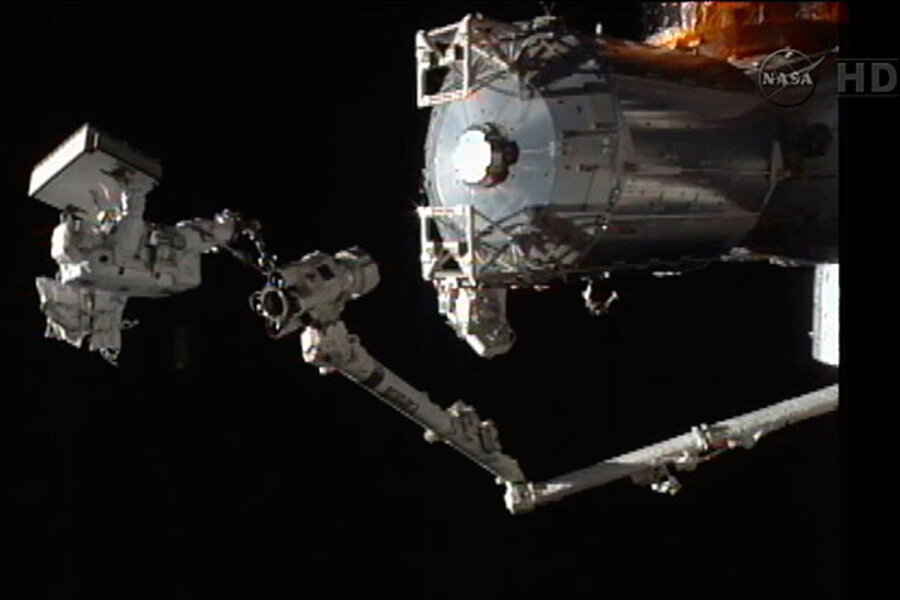Stuck bolt on ISS: Astronauts didn't bring any WD-40
| Cape Canaveral, Fla.
Spacewalking astronauts armed with brushes and other homemade tools attempted to install a critical power-switching box at the International Space Station on Wednesday and revive electrical systems.
A stiff bolt prevented NASA's Sunita Williams and Japan's Akihiko Hoshide from properly securing the new unit last Thursday. The problem cut the amount of electrical power available to the space station and a variety of equipment had to be turned off.
Williams and Hoshide carted out an assortment of jury-rigged tools to clean the troublesome bolt and its socket. Included in their arsenal: a blue toothbrush and a wire pipe cleaner to deal with the metal shavings discovered last week and any other debris.
RECOMMENDED: Are you scientifically literate? Take the quiz
The team had four hours to get the box plugged in. Otherwise, the astronauts would have to give up and drag it inside for more extensive work.
The list of possible repair methods for the spacewalkers ran 15 pages and included lubricating the bolt as well as applying extra pressure and plain old jiggling. NASA flight controllers worked practically nonstop over the Labor Day weekend to come up with all the options.
In a blog on NASA's web site, Williams wrote earlier this week, "Lots of folks suggested that WD40 would do the trick, but getting a can of that stuff to work in space is sort of difficult. So, we have a couple other tricks up our sleeve."
While the space station has remained stable, NASA is in a hurry to get the problem fixed because of the impending departure of the U.S. astronaut who operated the hefty robot arm from inside, Joseph Acaba. He's due to return to Earth in 1½ weeks.
Altogether, the space station has four of these power-switching units, which relay electricity from the eight solar wings. Being down one unit meant the orbiting complex could draw power from only six of those wings.
The power store was further degraded over the weekend when, in an unrelated problem, a tripped circuit breaker prevented full access to yet another solar panel. That left the space station running on just five wings, a vulnerable situation.
Mission Control placed a special jar of peanuts on its main desk in Houston for good luck. "So I'm pretty sure this is going to go swimmingly," Mission Control assured the crew.
Williams, a Navy captain making her sixth spacewalk, was on the verge of becoming the most experienced female spacewalker in the world.
RECOMMENDED: Are you scientifically literate? Take the quiz
___
Online:
NASA: http://www.nasa.gov/mission_pages/station/main/index.html
.
Copyright 2012 The Associated Press.








